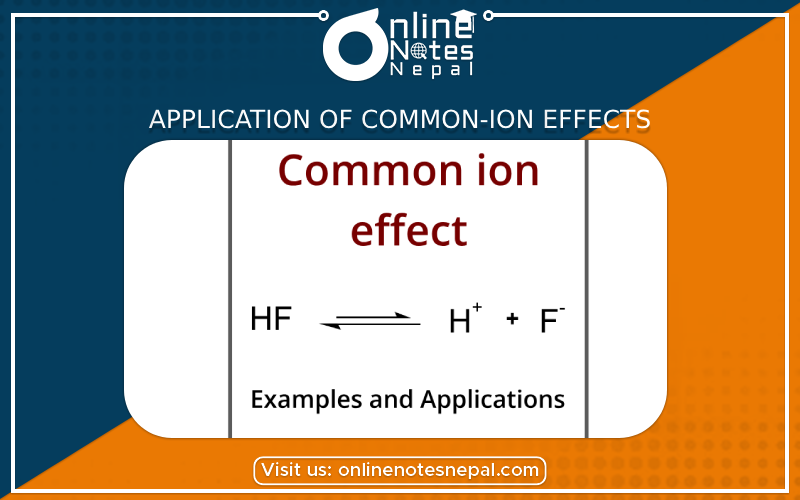Published by: Nuru
Published date: 25 Jun 2021

The application of common-ion effects refers to the decrease in solubility of an ionic precipitated by the addition to the solution of a soluble compound with an ion in common with the precipitate. This behavior is a consequence of Le Chatelier’s Principle for the equilibrium reaction of the ionic association/dissociation. The effect is commonly seen as an effect on the solubility of salt, salts, and other weak electrolytes.
1) Cations such as Hg2+, Pb2+, Cu2+, As3+, etc belong to group second and these cations are precipitated in these sulphide forms. The solubility product constant of these cations is very low, so at a very low concentration of sulphide ions ionic product exceeds the solubility product constant and precipitation takes place. The low concentration of sulphide ion is maintained by passing H2S gas through the salt solution in the presence of HCL. Here, HCL is the strong electrolyte that causes a common ion effect. Due to the common ions affect the low concentration of sulphide ion is possible.
H2S ⇋ 2H+ + S–
HCL ⇋ H+ + Cl–
2) Cations such as Ni2+, Co2+, Zn2+, Mn2+, etc belong to group IIIB, and these cations are precipitated in their sulphide forms. The solubility product constant of these cations is very large. So at a very high concentration of sulphide ions Ionic product exceeds the solubility product constant and hence precipitation takes place. The very high concentration of sulphide ion is maintained passing H2S gas to the salt solution in the presence of NH4OH to give H2
H2O ⇋ 2H+ + S–
NH2OH ⇋ NH4++ OH–
H++ OH– → H2O
3) Cations such as Fe3+, Al3+, Cl3+, etc belong to group IIIA. These cations are precipitated in their hydroxide forms. The solubility product constants of these cations are very low so, at a very low concentration of hydroxide ions ionic product exceeds the solubility product constant. And hence, precipitation takes place. The very low concentration of hydroxide ion is maintained by the addition of NH4 Here, NH4Cl causes a common ion effect due to this low concentration of hydroxide ion is possible.
NH4OH ⇋ NH4+ + OH–
NH4Cl ⇋ NH4+ + CL–
4) Cations such as Ba2+, Ca2+, Si2+, etc belong to group IV and these cations are precipitated in their carbonate forms. The solubility product constants of these cations are very low. So at very low concentration of carbonate ions ionic products exceeds over solubility product constant and hence precipitation takes place the low concentration of carbonate ion is maintained by the addition of ammonium carbonate(NH4OH)CO3 In presence of NH4CL and NH4
Hence, NH4Cl is a strong electrolyte that causes a common ion effect so a low concentration carbonate ion is possible.
(NH4)2CO3 ⇋ 2NH4+ + CO3—
NH4CL → 2NH4+ Cl–
Therefore, these are the applications for the common-ion effect.